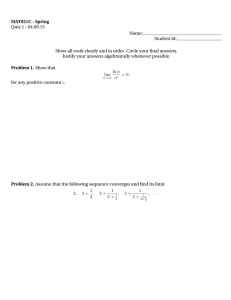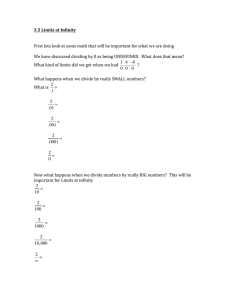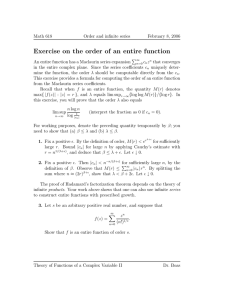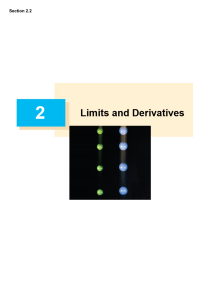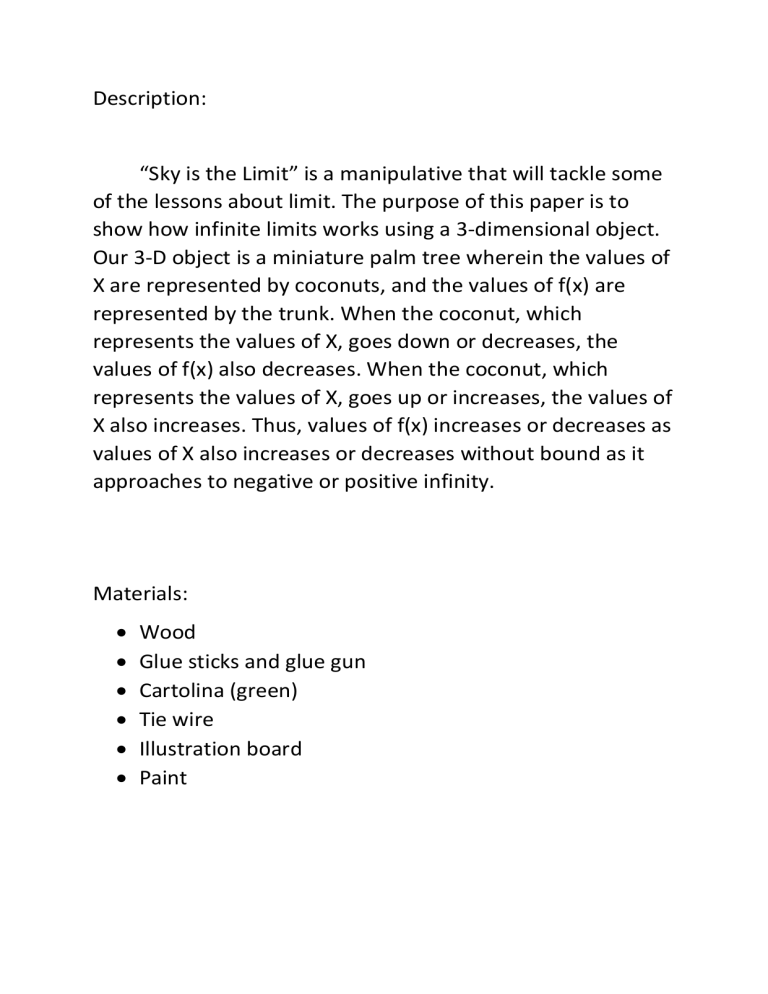
Description: “Sky is the Limit” is a manipulative that will tackle some of the lessons about limit. The purpose of this paper is to show how infinite limits works using a 3-dimensional object. Our 3-D object is a miniature palm tree wherein the values of X are represented by coconuts, and the values of f(x) are represented by the trunk. When the coconut, which represents the values of X, goes down or decreases, the values of f(x) also decreases. When the coconut, which represents the values of X, goes up or increases, the values of X also increases. Thus, values of f(x) increases or decreases as values of X also increases or decreases without bound as it approaches to negative or positive infinity. Materials: Wood Glue sticks and glue gun Cartolina (green) Tie wire Illustration board Paint Picture of the Manipulative: Discussion: Concept of Infinite Limits In this paper, we will know how infinite limits works using a 3-dimensional object. Limit is the approximate values of f(x) that gets closer to a certain number. But what happens when the function doesn’t approach any certain f(x)? Thus, we say that the limit does not exist. However, if F approaches infinity as X approaches a number C, the values of f(x) becomes smaller or larger without bound as X approaches C. This function is said to have infinite limit. Infinite limits are those that have a value of positive or negative infinity where the function increases or decreases without bound. In our 3-D model, the parts of the palm tree will represent both values of X and Y. Wherein the coconut will represent the values of X as X approaches to a certain value of Y, represented by corresponding values of Y on each trunk. As the values of X decreases, the values of Y also decreases. As the values of X increases, the values of Y also increases. The function −2𝑥+𝑥 𝑥−1 will determine whether the values of both X and Y will increases or decrease. Example: −2𝑥 + 𝑥 𝑥→1 𝑥 − 1 lim x -.9 -.99 -.999 -.9999 f(x) 1.526315789 1.502512563 1.500250125 1.500025001 x 1.1 1.01 1.001 1.0001 f(x) -9 -99 -999 -9999 Assuming that the coconuts are the values of X and the trunks are the values of f(x). If the decreasing values of X are substituted to the function, the corresponding f(x) values decreases. If the increasing values of X are substituted to the function, the corresponding f(x) values increases. Solution: lim = 𝑥→1 −2𝑥 + 𝑥 𝑑𝑜𝑒𝑠 𝑛𝑜𝑡 𝑒𝑥𝑖𝑠𝑡 𝑥−1 To get the limit from both sides, −2𝑥 + 𝑥 lim 𝑓(𝑥 ) = =Ꝏ 𝑥→1 𝑥−1 = -2 + 1 = -1 As x→1, (x-1)→0 through negative values lim 𝑓(𝑥 ) = 𝑥→1 −2𝑥 + 𝑥 = −Ꝏ 𝑥−1 = -2(1) + (1) = -1 As x→1, (x-1)→0 through positive values Illustration: As the x from the left approaches -.9, the f(x) approaches 1.526315789. As x from the right approaches 1.1, the f(x) approaches -9. As the x from the left approaches -.99, the f(x) approaches 1.502512563. As x from the right approaches 1.01, the f(x) approaches -99. As the x from the left approaches -.999, the f(x) approaches 1.500250125. As x from the right approaches 1.001, the f(x) approaches -999. As the x from the left approaches -.9999, the f(x) approaches 1.500025001. As x from the right approaches 1.0001, the f(x) approaches -9999. Documentation:

